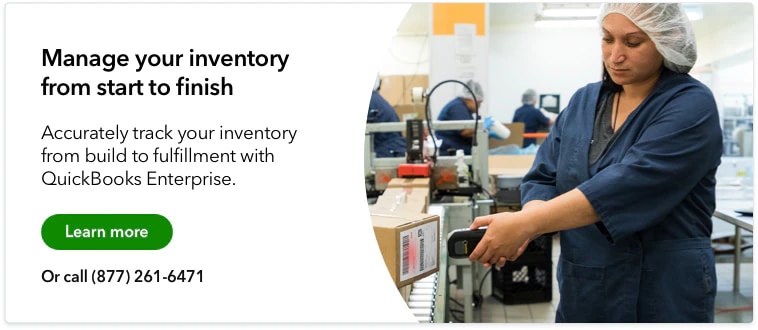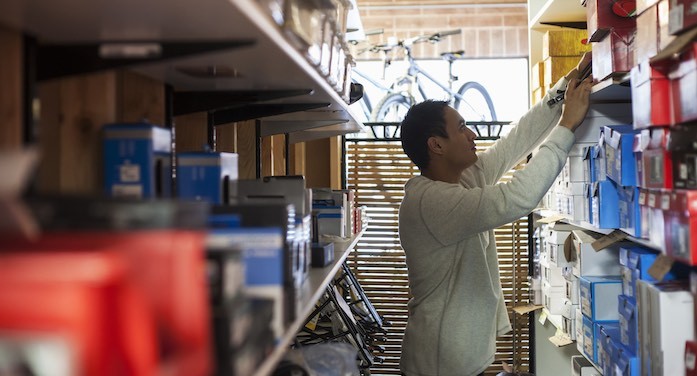The bulk of manufacturing operations involves taking raw materials and turning them into finished goods. During this process, inventory goes through multiple stages of manufacturing.
Finished goods are the third and final state of inventory ready for sale. As most other businesses only carry this type of inventory, there’s no need to distinguish finished goods and inventory specific to manufacturers.
What is finished goods inventory?
Finished goods inventory is any stock carried by a manufacturer ready for immediate sale. This is internal terminology, as what a company defines as a finished good doesn’t always hold true for everyone else.
For example, a manufacturing company that produces bottles will see it as a finished product. Its customer, however, may be using the bottle to package its product and considers it packaging materials inventory.
Finished goods inventory only affects manufacturers, whereas retailers, distributors, and other businesses typically only deal with finished goods.
Categorizing inventory by its various stages helps manage the production process and supply chain, and gives an accurate account of total inventory. Inventory that’s closer to being sold naturally has a higher value.
Difference between finished goods and other inventory
The differences between finished goods and the two other types of inventory, raw materials and work in progress (or work in process), are their stage of production and the value they hold to the company.
Raw materials are the primary inputs used to make finished goods. In this stage, raw material inventory has been purchased but still sits untouched in the warehouse. It’s considered an asset equal to the amount paid for the materials.
Work in progress (WIP) inventory is raw materials that have already undergone some amount of processing. The moment any changes have been applied, they are considered intermediate goods and work in process inventory.
Assigning WIP inventory may be disregarded if the manufacturing process is short. In these cases, a company can move raw materials directly to finished goods. However, if there’s a considerable length of time spent in production, it’s advised to consider these as WIP inventory.
Why you should know the finished goods inventory formula
The finished goods formula is critical for deriving accurate accounting and inventory levels. Knowing these numbers helps a manufacturer in the following ways:
It calculates current assets and gross profit
All types of inventory are reported as current assets on the balance sheet. However, identifying finished goods helps determine how much of your inventory accounts are short-term assets and can soon be expected to generate profit.
It eliminates material waste
Calculating finished goods inventory helps to understand the total time it takes to produce a product ready for sale. Once a manufacturer knows its capacity, it can better determine how much and how often it should purchase its raw materials. Carrying only the amount needed, plus some safety stock, will help lessen waste and lower costs.
Leads to more efficient operations
The formula for finished goods requires knowing your direct material and direct labor costs, as well as beginning and ending inventory. (We give you the formula to calculate finished goods inventory value in the following sections.)
Seeing a breakdown of your inventory costs can potentially reveal opportunities to optimize operations and lower costs.
What is the finished goods inventory formula?
The finished goods formula is used to determine the total value of products a company has ready for sale. By looking at key numbers in your production operations, such as direct costs and purchases during the period, you can project how much inventory is available to generate immediate revenue.
How to calculate finished goods inventory?
The finished goods inventory formula is simple but requires knowing key numbers about your current production. Here is the formula to calculate your finished goods inventory:
Finished goods inventory = Beginning finished goods inventory + (Cost of goods manufactured - Cost of goods sold)
Beginning finished goods inventory is essentially the finished goods inventory of the last period. Once you start regularly calculating finished goods, you’ll be able to get this number directly from your financial statements.
Cost of goods manufactured (COGM) is the total amount spent to produce items ready for sale during a specific period. The calculation for COGM is:
COGM = (Beginning WIP Inventory + Total manufacturing cost) – Ending WIP inventory
Note that total manufacturing costs is equal to direct labor, direct materials, and overhead costs.
Cost of goods sold (COGS) is the total direct costs of producing the items sold during a specific period. It includes only direct costs, such as labor and materials, but not indirect expenses, like rent or utilities. The calculation for COGS is:
COGS = (Beginning inventory + Purchases during the period) − Ending inventory
To see how the finished goods formula is used in manufacturing, say a golf equipment manufacturing company had $100,000 in finished goods inventory at the end of the last period.
This period, their COGM is $150,000 and their COGS is $120,000. The company arrives at its finished goods inventory using the calculation below:
$130,000 = $100,000 + ($150,000 - 120,000)
For the period, its finished goods inventory is $130,000 (which will be used as the previous finished goods inventory for the next period).
What is your ideal finished goods inventory level?
As with all inventory ratios, no one finished goods number is recommended across all manufacturers. Rather, your ideal finished goods inventory level should be the minimum amount you can have on hand while still meeting customer demand.
Stocking too many finished goods increases warehousing costs, decreases cash flow, and can leave you with a lot of dead stock or obsolete inventory. On the other hand, stocking too few can lead to the inability to fulfill customer orders.
Keeping tabs on your finished goods inventory turnover is a good way to familiarize yourself with the optimum inventory levels for your business – one where you don’t tie up too much cash flow, but are still able to confidently meet market demand.
Final thoughts
For manufacturers who deal with lengthy processes, it’s best to segment your production by the different stages using inventory management software.
Not only can you gain a better understanding of total inventory value and how many goods are ready for sale, but you can also prevent any stockouts, find ways to optimize your inventory system, and increase overall profitability.














